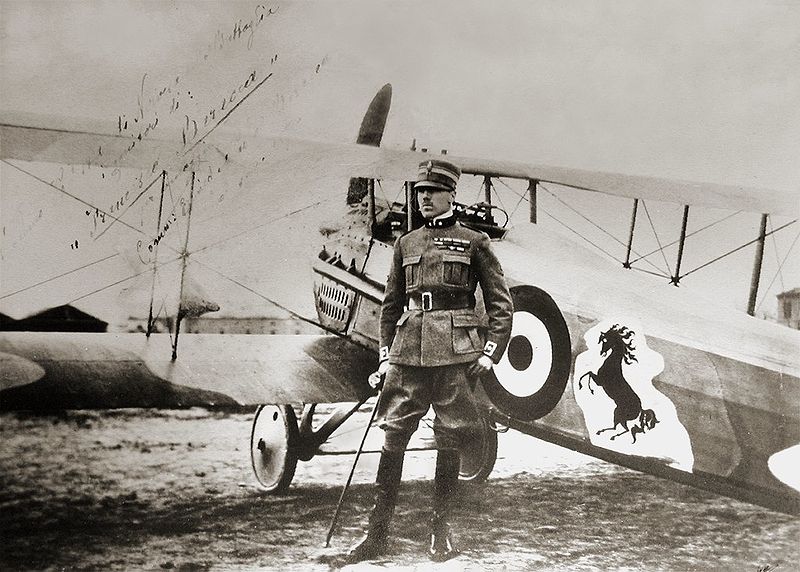<Back to Index>
- Race Car Driver and Entrepreneur Enzo Anselmo Ferrari, 1898
- Automotive Engineer Alberto Massimino, 1895
- Fighter Ace Francesco Baracca, 1888
PAGE SPONSOR
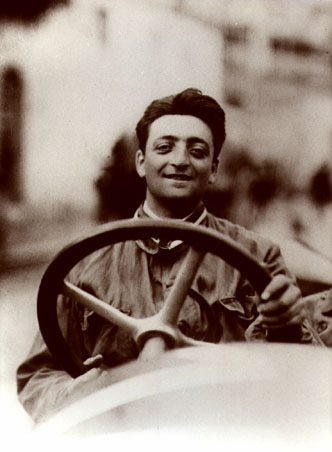
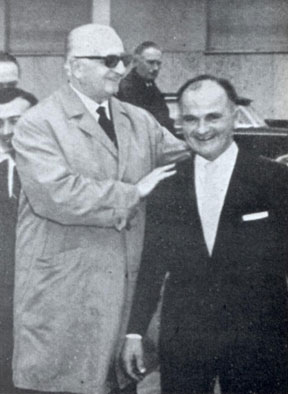
Enzo Anselmo Ferrari (February 18, 1898 – August 14, 1988) Cavaliere di Gran Croce OMRI was an Italian race car driver and entrepreneur, the founder of the Scuderia Ferrari Grand Prix motor racing team, and, subsequently, of the Ferrari car manufacturer. He was often referred to as "il Commendatore".
Born in Modena, Italy, Ferrari grew up with little formal education but a strong desire to race cars. At the age of 10 and seeing the 1908 Circuit di Bologna, he decided to become a driver of race cars. During World War I he was assigned to the third Alpine Artillery division of the Italian Army. His father Alfredo, as well as his older brother, also named Alfredo, died in 1916 as a result of a widespread Italian flu outbreak. Ferrari became severely ill himself in the 1918 flu pandemic and was consequently discharged from the Italian service. Upon returning home he found that the family firm had collapsed.
Having no other job prospects, Ferrari eventually settled for a job at a smaller car company called CMN (Costruzioni Meccaniche Nazionali), redesigning used truck bodies into small passenger cars. He took up racing in 1919 on the CMN team, but had little initial success.
He left CMN in 1920 to work at Alfa Romeo and racing their cars in local races he had more success. In 1923, racing in Ravenna, he acquired the Prancing Horse badge which decorated the fuselage of Francesco Baracca's (Italy's leading ace of WWI) SPAD S.XIII fighter, given from his mother, taken from the wreckage of the plane after his mysterious death. This icon would have to wait until 1932 to be displayed on a racing car.
In 1924 Ferrari won the Coppa Acerbo at Pescara. His successes in local races encouraged Alfa to offer him a chance in a much more prestigious competition. Ferrari turned this opportunity down and did not race again until 1927. He continued to work directly for Alfa Romeo until 1929 before starting Scuderia Ferrari as the racing team for Alfa.
Ferrari managed the development of the factory Alfa cars, and built up a team of over forty drivers, including Giuseppe Campari and Tazio Nuvolari. Ferrari himself continued racing until 1932.
The support of Alfa Romeo lasted until 1933, when financial constraints made Alfa withdraw. Only at the intervention of Pirelli did Ferrari receive any cars at all. Despite the quality of the Scuderia drivers, the company won few victories. Auto Union and Mercedes dominated the era, but Ferrari achieved a notable victory when Tazio Nuvolari beat them on their home turf at the German Grand Prix in 1935.
In 1937 Alfa took control of its racing efforts again, reducing Ferrari to Director of Sports under Alfa's engineering director. Ferrari soon left, but a contract clause restricted him from racing or designing cars for four years.
In response, Ferrari organized Auto - Avio Costruzioni, a company supplying parts to other racing teams. Ferrari did manage to manufacture two cars for the 1940 Mille Miglia, driven by Alberto Ascari and Lotario Rangoni. During World War II his firm was forced to undertake war production for Mussolini's fascist government. Following Allied bombing of the factory, Ferrari relocated from Modena to Maranello. It was not until after World War II that Ferrari could start making cars bearing his name, founding today's Ferrari S.p.A. in 1947.
The first open - wheel race was in Turin in 1948 and the first victory came later in the year in Lago di Garda. Ferrari participated in the Formula 1 World Championship since its introduction in 1950 but the first victory was not until the British Grand Prix of 1951. The first championship came in 1952 – 53, with Alberto Ascari. The company also sold production sports cars in order to finance the racing endeavors not only in Grand Prix but also in events such as the Mille Miglia and Le Mans.
Ferrari's decision to continue racing in the Mille Miglia brought the company new victories and greatly increased public recognition. However, increasing speeds, poor roads, and nonexistent crowd protection eventually spelled disaster for both the race and Ferrari. During the 1957 Mille Miglia, near the town of Guidizzolo, a 4.0-litre Ferrari 335S driven by the flamboyant Alfonso de Portago was traveling at 250 km/h when it blew a tire and crashed into the roadside crowd, killing de Portago, his co-driver, and nine spectators, including five children. In response, Enzo Ferrari and Englebert, the tire manufacturer, were charged with manslaughter in a lengthy criminal prosecution that was finally dismissed in 1961.
Many of the firm's greatest victories came at Le Mans (14 victories, including six in a row 1960 – 65) and in Formula One during the 1950s and 1960s, with the successes of Juan - Manuel Fangio (1956), Mike Hawthorn (1958), Phil Hill (1961) and John Surtees (1964).
In 1969 the problems of reduced demand and inadequate financing forced Ferrari to allow Fiat to take a stake in the company. Ferrari had previously offered Ford the opportunity to buy the firm in 1963 for US$ 18 million but, late in negotiations, Ferrari withdrew once he realized that he would not have been able to retain control of the company sporting program. Ferrari became joint stock and Fiat took a small share in 1965 and then in 1969 they increased their holding to 50% of the company. (In 1988 Fiat's holding rose to 90%.)
In 1974 Ferrari nominated Luca Cordero di Montezemolo sporting director. Niki Lauda won the championship in 1975 and 1977. After those successes and another title for Jody Scheckter in 1979, the company's Formula One championship hopes fell into the doldrums.
1982 opened with a strong car, the 126C2, world class drivers, and promising results in the early races. However, Gilles Villeneuve was killed in the 126C2 in May, and teammate Didier Pironi had his career cut short in a violent end over end flip on the misty back straight at Hockenheim in August. Pironi was leading the driver's championship at the time; he would lose the lead as he sat out the remaining races. Ferrari remained chairman of the company until his death in 1988 but the team would not see championship glory again during his lifetime.
Ferrari's management style was autocratic and he was known to pit driver against driver in the hope of improving performance. Following the death of Alberto Ascari, with whom he had a strong relationship, he chose not to get too close to his drivers.
Some critics believe that Ferrari deliberately increased psychological pressure on his drivers, encouraging intra - team rivalries and fostering an atmosphere of intense competition for the position of number one driver. “He thought that psychological pressure would produce better results for the drivers,” said Ferrari team driver Tony Brooks. "He would expect a driver to go beyond reasonable limits... You can drive to the maximum of your ability, but once you start psyching yourself up to do things that you don’t feel are within your ability it gets stupid. There was enough danger at that time without going over the limit.”
During the late 1950s and 1960s seven Ferrari drivers - Alberto Ascari, Eugenio Castellotti, Alfonso de Portago, Luigi Musso, Peter Collins, Wolfgang Von Trips, and Lorenzo Bandini - were all killed driving Ferrari race cars. Although such high death toll was not at all unusual in motor racing in those days, the Vatican newspaper L’Osservatore Romano described Ferrari as being like the god Saturn, who consumed his own sons. In Ferrari's defense, contemporary F1 race car driver Stirling Moss commented: “I can’t think of a single occasion where a (Ferrari) driver’s life was taken because of mechanical failure.”
In public Ferrari was careful to acknowledge the drivers who risked their life for his team, insisting that praise should be shared equally between car and driver for any race won. However, his longtime friend and company accountant, Carlo Benzi, related that privately Ferrari "would say that the car was the reason for any success.”
Enzo Ferrari spent a reserved life, and rarely granted interviews. He was married to Laura Dominica Garello Ferrari (c. 1900 – 1978) from 1932 until her death. They had one son, Alfredo "Dino", who was born in 1932 and groomed as Enzo's successor, but he suffered from ill health and died from muscular dystrophy in 1956. Enzo had a second son, Piero, with his mistress Lina Lardi in 1945. As divorce was illegal in Italy until 1975, Piero could only be recognized as Enzo's son after Laura's death in 1978, and became a vice president of the Ferrari company with a 10% share ownership.
Made a Cavaliere del Lavoro in 1952, to add to his honors of Cavaliere and Commendatore in the 1920s, Ferrari also received a number of honorary degrees, the Hammarskjöld Prize in 1962, the Columbus Prize in 1965, and the De Gasperi Award in 1987. In 1994, he was posthumously inducted into the International Motorsports Hall of Fame.
Enzo Ferrari died on August 14, 1988 in Maranello at the age of 90. His death was not made public until two days later, as by Enzo's request, to compensate late registration of his birth. He witnessed the launch of the Ferrari F40, one of the greatest road cars at that time, shortly before his death, which was dedicated as a symbol of his achievements. In 2003 the first car to be named after him was launched in the Enzo Ferrari.
The Italian Grand Prix was held just weeks after Ferrari's death, and, fittingly, the result was a 1-2 finish for Ferrari, with Gerhard Berger leading home Michele Alboreto. After Ferrari's death, the Scuderia Ferrari team has had further success, winning the World Drivers' Championship in 2000, 2001, 2002, 2003 and 2004 with Michael Schumacher and in 2007 with Kimi Räikkönen.
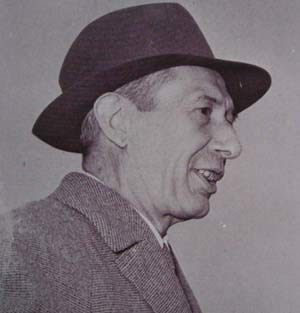
Alberto Massimino (1895–1975) was an Italian automotive engineer.
Born in Turin, he studied mechanical engineering in Switzerland and worked for FIAT (1924 – 28), where he followed Vittorio Jano who had left for Alfa Romeo. The 1500 cc, 12 cylinder 806 / 504 was driven by Pietro Bordino in the Gran Premio di Milano (1927). He also had a short stay at Alfa Romeo and Stabilimenti Farina before joining Scuderia Ferrari (1938 – 44), working on the 158 Alfetta with Gioacchino Colombo, as well as on the Tipo 815 (1940 Mille Miglia). At Maserati (1944 – 52) he was involved in the Maserati 4CLT, Maserati A6 (1946) and Maserati 250F (1952). He then worked on shorter projects for Ferrari (the Ferrari Dino), Stanguellini, De Tomaso, Moretti and Scuderia Serenissima.
Massiminimo died at Modena in 1975.
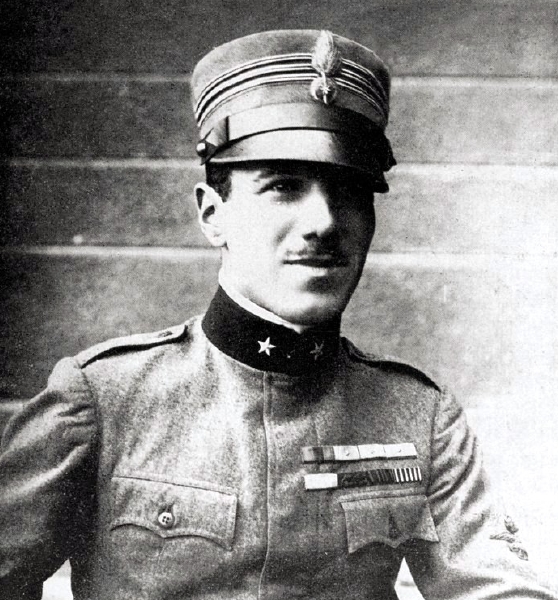
Count Francesco Baracca (9 May 1888 – 19 June 1918) was Italy's top fighter ace of World War I. He was credited with 34 aerial victories.
Baracca was born in Lugo di Romagna. He was the son of a wealthy landowner. The younger Baracca initially studied at a private school in Florence before entering the Military Academy of Modena in October 1907. As he had become a passionate equestrian as an antidote to classroom boredom, he became a cavalryman with the prestigious Piemonte Reale Cavalleria Regiment upon his commissioning in 1910. His first duty station allowed him to attend concerts and opera in Rome, as well as pursuing hunting and equestrian competitions; he gained some fame in the latter. This little idyll was spoiled by orders to a small town in central Italy. Baracca then became interested in aviation and learned to fly at Rheims, France, receiving his pilot's license on 9 July 1912. He then served with the Battaglione Aviatori and in 1914 with the 5th and 6th Squadriglie.
During the months between the outbreak of World War I and Italy's entry into the war, there was intense political controversy in Italy between pro-war and pro-peace factions. Baracca remained aloofly neutral, but ready to serve his nation. After Italy's entry into the war on the Allied side in May 1915, he was sent to Paris to convert to Nieuport two - seaters. Upon his return in July, he was assigned to the 8a Squadriglia Nieuport. The Nieuport 10s that equipped this squadron were almost useless against Austro - Hungarian raids; they were too slow, with too slow a rate of climb, to bring the intruders to battle with any regularity. The frustrated Italian pilots even resorted to leaving their observers ground - bound in attempts to improve performance, to little avail. On those rare occasions when battle was joined, the Nieuports' guns usually jammed. Renaming the unit to 1a Squadriglia Caccia on 1 December 1915 did nothing to solve the problems.
The Nieuport 11 single seat fighter with Lewis guns entered service in April 1916, and on 7 April, flying this new fighter, Baracca scored his first victory, holing the fuel tank of an Austrian Hansa - Brandenburg C.I and wounding its two man crew. This was also Italy's first aerial victory in the war. This first victory featured his favorite maneuver, which was to zoom in unseen behind and below an enemy and fire his machine gun from pistol range.
It was around this time that Baracca adopted as a personal emblem a black prancing horse on his Nieuport 17, in tribute to his former cavalry regiment. This prompted some to call him, "The Cavalier of the Skies". Flying the Nieuport 17 and then, from March 1917, the SPAD VII, he scored both individually, and in combination with other Italian aces.
Baracca's second victory was an Austrian Lohner over Gorizia on 23 April 1916. After his third victory, he transferred to 70a Squadriglia. Promoted to Capitano, Baracca remained with the unit until, with 9 victories, he transferred to the newly formed 91st Squadriglia, known as the "Squadron of the Aces", in 1 May 1917. By that time, his ever increasing list of victories had made him nationally famous. While he initially dodged the responsibilities and paperwork that went with command, he finally settled into heading the squadron.
Baracca's friend Fulco Ruffo di Calabria nearly ended Baracca's career — and life — in June 1917. Ruffo di Calabria burst out of a cloud firing in a head-on pass at an enemy airplane, and barely missed Baracca. Later, on the ground, Baracca assured his companion, "Dear Fulco, next time, if you want to shoot me down, aim a couple of meters to the right. Now let's go for a drink and not talk of it any more!"
Baracca temporarily upgraded to a Spad XIII in October 1917, using it to achieve a couple of victories on the 22nd, and on a win scored on a joint sortie with Pier Piccio on the 25th. That night he wrote: "I had my SPAD shot up and its longeron broken into pieces by enemy machine gun fire in an aerial dogfight." As a result, Baracca returned to the more maneuverable Spad VII, remarking, "It doesn't matter if the VII is equipped with a single gun. Provided you are a good fighter, a single gun is just enough." Nevertheless, after repair, he sometimes returned to the Spad XIII.
A dedicated fighter pilot, Baracca found life away from the front unbearable and remained as much as possible with the 91st Squadriglia, even after being promoted to Maggiore in November 1917. Baracca remained a modest, sensitive man conscious of his duty and compassionate to both his squadron comrades and to his defeated enemies. He would try to visit his victims in hospital afterwards, to pay his respects, or he would place a wreath on the grave of those he killed. He had raised his score to 30 by the end of 1917.
Soon afterwards, Baracca, Piccio, and Ruffo di Calabria were tasked with evaluating the new Ansaldo A.1 Balilla fighter. Baracca was personally decorated by King Victor Emmanuel III at La Scala at this time. It was March 1918 before Baracca convinced his superiors that he belonged back at the front. He was not long back before he found himself in a situation similar to the previous late October: his squadron was forced to withdraw by enemy advances on 27 April. It was about this time that he adopted the griffin as an insignia for the planes in his unit. Most of his pilots adopted it, though some still flaunted the prancing stallion as a gesture of respect for their commander.
Baracca saw little action in 1918, but he added more victories, for a total of 34, before failing to return from a strafing mission on the Montello hill area on 19 June. The Italians were taking advantage of their air supremacy to fly treetop ground attack missions into a storm of small arms fire. In the 0630 troop support mission, Baracca and rookie pilot Tenente Franco Osnago were hit by ground fire and split from one another. A few minutes later, both Baracca's home airfield and Osnago saw a burning airplane fall. According to other sources, Baracca had left Osnago to provide him with top cover as he dived on the enemy trenches. Osnago lost sight of his commander, then he saw something burning in a nearby valley. Some days later, on 24 June, after an Austro - Hungarian retreat, Baracca's remains were recovered from where they lay, four meters from the burnt remnants of his Spad XIII. A monument in his memory was later built on the site. Osnago, Ferruccio Ranza, and a journalist named Garinei retrieved his body for the large funeral that was held in his home town of Lugo.
His body, when found, reportedly bore the marks of a bullet to the head. In his hand, he held a pistol, leading to suspicions that he elected to take his own life rather than die in a crash or be taken prisoner. An Austrian pilot reportedly claimed to have shot him down in combat. Both these theories are unsupported by firm evidence and the most accepted version is that Baracca was hit by ground fire. It should, however, be noted that research in Austro - Hungarian records indicates that he was killed by the gunner of an Austrian two - seater while attacking from above and behind. Ltn Arnold Barwig in Phönix C.I 121.17, piloted by Zgsf Max Kauer, claimed to have shot down the Italian ace.
Baracca's total of 34 victory claims can largely be verified from known Austro - Hungarian losses and surviving military records, establishing the Italian as one of the highest scoring Allied pilots during the conflict.
Many roads in Italy are named after Baracca. The airport of Bolzano, a city in the province of South Tyrol, the Roma - Centocelle Italian Air Force base, and the Lugo di Romagna air field are all named after Baracca.
In later years, Baracca's mother presented his prancing stallion emblem, the Cavallino Rampante, to Enzo Ferrari. The prancing horse has been the official symbol of the Scuderia Ferrari racing team since 1929, and of Ferrari automobiles since they began manufacture.
